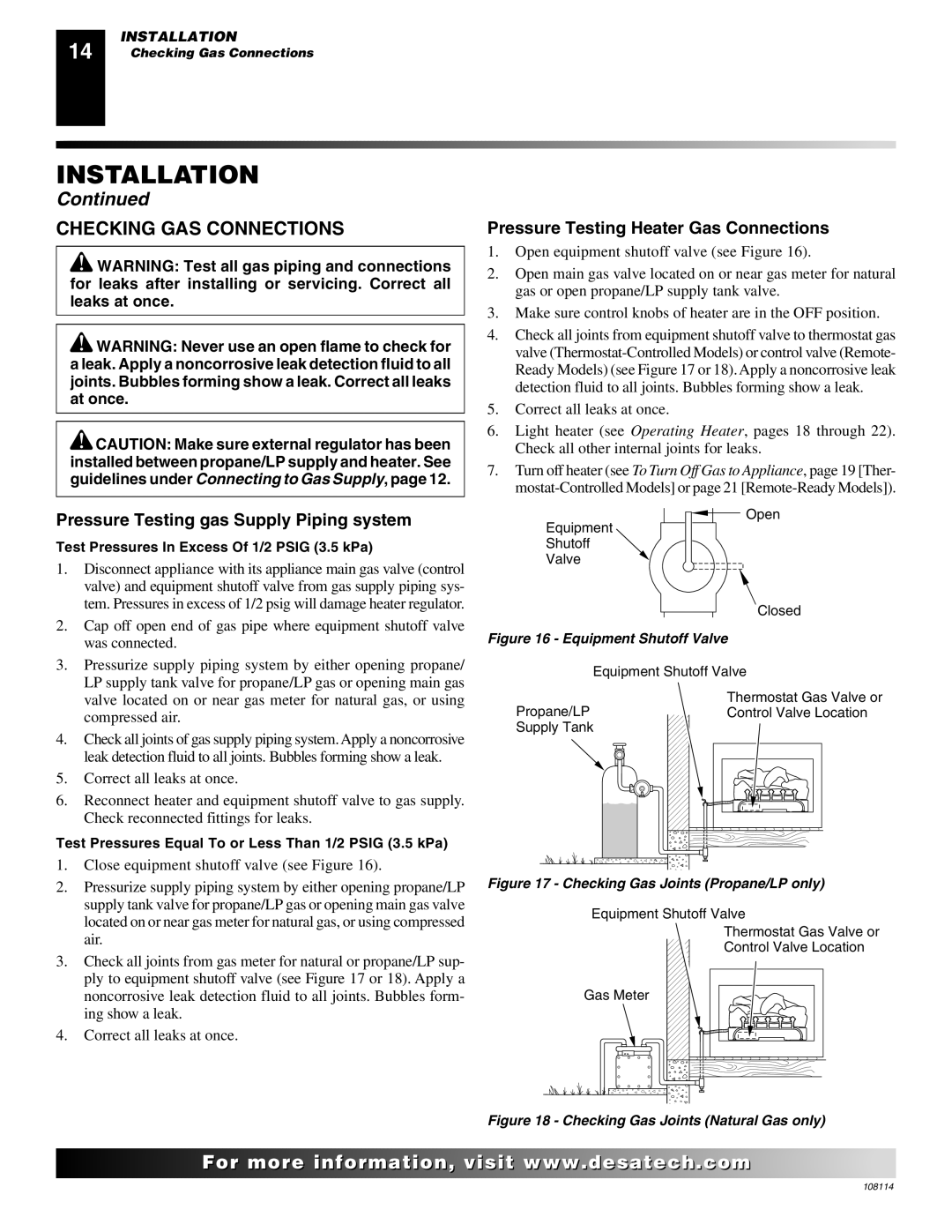INTERNATIONAL UNVENTED (VENT-FREE) GAS LOG HEATER specifications
The Desa International Unvented (Vent-Free) Gas Log Heater stands as a remarkable solution for those seeking an efficient and aesthetically pleasing heating option for their homes. Recognized for its innovative design and advanced technology, this heater offers numerous benefits that cater to both functionality and style.One of the main features of the Desa gas log heater is its vent-free design. This characteristic eliminates the need for ductwork or exhaust systems, allowing for easy installation in various locations, including living rooms, bedrooms, or recreational areas. With no external venting required, homeowners can enjoy increased flexibility in placement while saving on installation costs and labor. Moreover, the heater can fit seamlessly into existing fireplaces, creating a cozy ambiance without the need for traditional firewood.
Another standout feature of the Desa vent-free gas log heater is its exceptional energy efficiency. Utilizing infrared technology, the heater converts a high percentage of gas to heat, warming spaces quickly and reducing energy consumption. The unit is designed to operate with natural gas or propane, offering versatility depending on the homeowner's fuel preferences.
Safety is a top priority in the design of the Desa gas log heater. Equipped with an automatic shut-off system and an oxygen depletion sensor, the heater ensures secure operation by shutting down in case oxygen levels drop too low. This added safety feature provides peace of mind for families, allowing for safe use even during extended periods of operation.
Aesthetically, the Desa International gas log heater does not compromise on style. With an array of realistic log designs and finishes, homeowners can choose a heater that complements their interior decor perfectly. The unit’s flame effects mimic traditional wood-burning fires, enhancing the warm ambiance of any room.
In conclusion, the Desa International Unvented (Vent-Free) Gas Log Heater offers a unique combination of efficiency, safety, and aesthetics. Its vent-free design allows for flexible installation, while infrared heating technology ensures quick warmth and energy savings. Coupled with enhanced safety features and an attractive appearance, this gas log heater provides a practical and stylish heating solution for any home.

